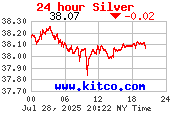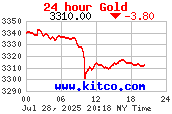F.A. Hayek won the Nobel Prize in economics for a theory of the business cycle that holds great explanatory power—especially in light of the current financial crisis, which so many economists have been at a loss to explain. Hayek’s work, which builds on a theory developed by Ludwig von Mises, finds the root of the boom-bust cycle in the central bank—in our case the Federal Reserve System, the very institution that postures as the protector of the economy and the source of relief from business cycles.
Looking at the money supply makes sense when searching for the root of an economy-wide problem, for money is the one thing present in all corners of the market, as Robbins pointed out in his 1934 book, The Great Depression. “Is it not probable,” he asked, “that disturbances affecting many lines of industry at once will be found to have monetary causes?”
In particular, the culprit turns out to be the central bank’s interference with interest rates. Interest rates are like a price. Lending capital is a good, and you pay a price to borrow it. When you put money in a savings account or buy a bond, you are the lender, and the interest rate you earn is the price you are paid for your money.
As with all goods, the supply and demand for lending capital determines the price. If more families are saving or more banks are lending, borrowers don’t have to pay as much to borrow, and interest rates go down. If there’s a rush to borrow or a dearth of lending capital, interest rates go up.
There are some results of this dynamic that contribute to a healthy economy. Start with the case where people are saving more, thus increasing the supply of lending capital and lowering interest rates. Businesses respond by engaging in projects aimed at increasing their productive capacity in the future—expanding facilities or acquiring new capital equipment.
Also consider the saver’s perspective. Saving indicates a lower desire to consume in the present. This is another incentive for businesses to invest in the future rather than produce and sell things now. On the other hand, if people possess an intense desire to consume right now, they will save less, making it less affordable for businesses to carry out long-term projects. But the big supply of consumer dollars makes it a good time to produce and sell.
Thus the interest rate coordinates production across time. It ensures a compatible mix of market forces: if people want to consume now, businesses respond accordingly; if people want to consume in the future, businesses allocate resources to satisfy that desire. The interest rate can perform this coordinating function only if it is allowed to move freely in response to changes in supply and demand. If the Fed manipulates the interest rate, we should not be surprised by discoordination on a massive scale.
http://www.amconmag.com/article/2009/mar/09/00012/
In Honor of Friday, July 4 –The American Revolution
-
The Declaration of Independence – Dramatic Reading by Celebrities — Kathy
Bates, Benicio Del Toro, Michael Douglas, Morgan Freeman, Mel Gibson,
Whoopi Go...
2 hours ago



